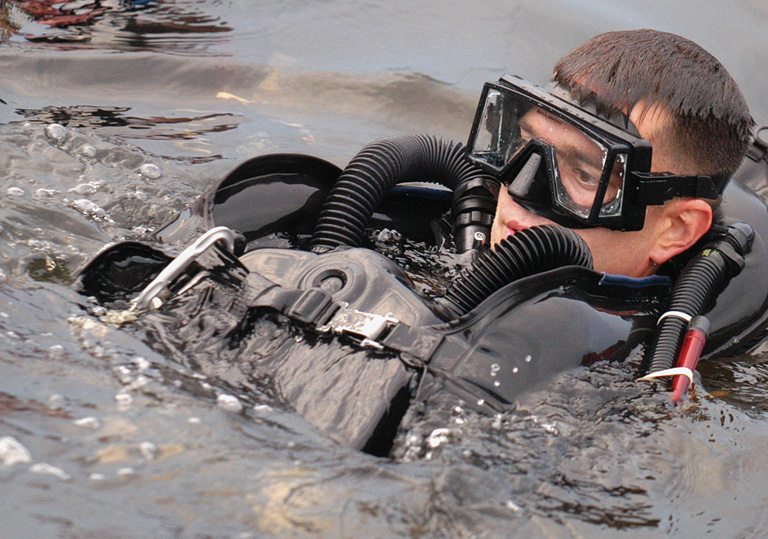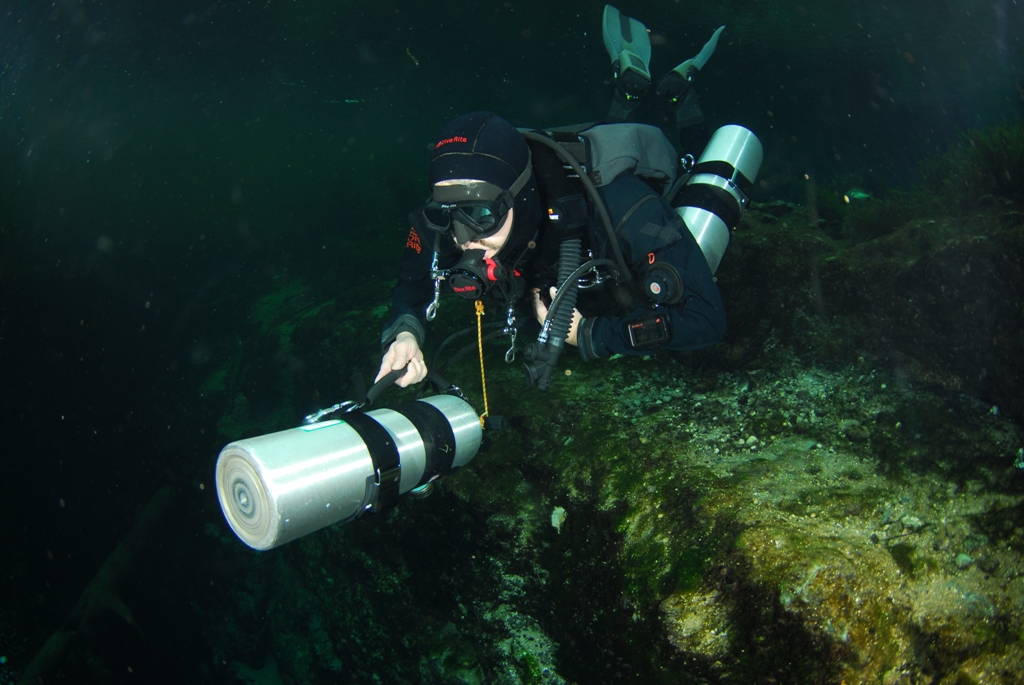Edd Sorenson is the greatest cave body recovery diver ever, performing incredible stunts of endurance and bravery in his many body recoveries.
He even saved a few cave divers alive, which is extremely rare as almost all incidents lead to deaths.
Besides that, he was also one of the early proponents of sidemount diving, a method of diving that allows divers to enter through smaller restrictions than the traditional back mounted diving. The method was initially considered dangerous, but after technical developments which Sorenson contributed to became the dominant form of cave diving.
Sorenson also made technical and educational contributions to civilian rebreather diving, which he mastered and often used in his many body recovery missions, as the method allows him to stay underwater for longer periods of time.
On top of all that, he's a great storyteller, which together with his physique and demeanor helps to cement his fame.
His name is Danish: en.wikipedia.org/wiki/Sørensen He looks incredibly military, but apparently isn't: youtu.be/K7m03k1k-Bk?t=171 He had an excavation business in Portland, Oregon, and wanted FIRE movement to Florida. He got a bit hurt by by the dot-com crash, but still managed to move after liquidating all assets.
This is another perfect example of how shitty our world is. The dude wasted his life until he was 40, and then only when he started doing what he really loved did he become mega famous and succesful. Video "What Would You Do If Money Were No Object by Alan Watts" comes to mind strongly yet again... After the move he relocated to the Jackson Blue Spring area.
Their URL was: www.mydreaminteractive.com, with several evolving captures: web.archive.org/web/20160127075812/http://mydreaminteractive.com/
Their flagship seems to have been this game: "MyDream" store.steampowered.com/app/348860/MyDream/, a Roblox-like. This is seen in 2015 at on web archive.
They had a child educational focus and also made some attempts in cryptocurrency.
Scott Hassan's shitty telepresence robot startup. Looking at the demos it is so painfully obvious why they failed, that feeble tall screen on wheels. But hindsight is 20/20... It is almost as bad as OurBigBook.
The most notable usage of the product is Snowden Snowbot, which is sad, the product name seems to have been "Beam". Who would use that if not for theatrics with an exilee when everyone already has a screen in front of their face all the time?[ref]
At least this phase produced some of the only videos of Hassan in existence such as:He's got a perfect american accent, so likely not a first generation immigrant.
Laser pointer by shahzadi
. Source. This is by far the most important type of laser commercially, as it can be made relatively cheaply, and it doesn't break easily as it ends up being a single crystal.
Compare them for example to the earlier gas lasers.
But the real mega aplications are:
- fiber-optic communication, where laser diodes are one of the most commonly used methods to generate the light that goes in the fiber. This makes laser diodes one of the most important inventions of the 20th centure without doubt.
- optical storage. But as of the 2020s its usefulness was much diminished by a combination of solid-state storage + faster Internet due largely to fiber-optic communication. So it is partly a matter of laser diodes beating laser diodes!
Closely related to optical amplifiers.
Feature added in 2019 apparently: www.reddit.com/r/DataHoarder/comments/dj6ot5/you_can_now_save_a_screenshot_of_your_saved_pages/
github.com/ourbigbook/template/archive/refs/heads/master.zip
But TODO: how to access the screenshot afterwards?
github.com/ourbigbook/template/archive/refs/heads/master.zip
But TODO: how to access the screenshot afterwards?
Unlisted articles are being shown, click here to show only listed articles.




